ISA: Intelligence Support Activity Spy Soldiers

The Intelligence Support Activity (ISA), 1st Capability Integration Group (Airborne), or simply Activity is a component of the U.S. Army and acts as a dedicated intelligence group for SOCOM. ISA has gone by many names over the years, but its current name is not known to the public.
- 1st Capability Integration Group
- Orange working group
- gray fox
- Army of Northern Virginia
- Military Support Office
- Center tip
- Torn Victor
Its purpose is unlike many other US Army Special Operations Forces, not dedicated to direct combat, and more to covert and clandestine actions necessary to support other military operations. Its scope is quite wide and it often works in support of JSOC, SOCOM and even other intelligence agencies. Originally, the ISA functioned as a tactical arm of the National Security Agency. Today, the ISA focuses on preparing the battlespace for military operations around the world. Act primarily as facilitators for JSOC Special Mission Units. ( Source )
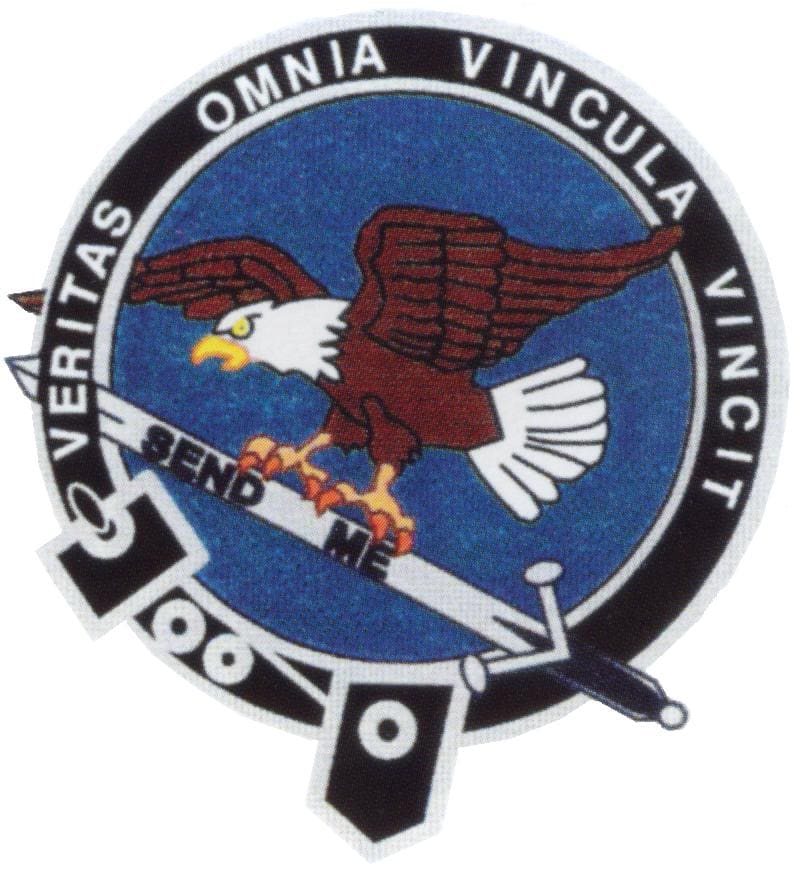
1. Doctrine
Operationally, the ISA is a dedicated intelligence group, performing intelligence work for special operations groups. The ISA is perhaps the biggest outlier from a doctrinal standpoint when compared to its other better known counterparts within JSOC and SOCOM as a whole. While Delta and DEVGRU focus on direct engagement and specialized combat tactics, the ISA conducts intelligence and espionage operations at a tactical level.

The intelligence support activity conducts its operations during and before US military operations. Human intelligence (HUMINT) and signals intelligence (SIGINT) are the most common products of their operations. ISA HUMINT collectors gather information from human sources through coercion and interrogation depending on the asset. Additionally, ISA collects SIGINT primarily by intercepting enemy communications or dispatching an agent to physically disturb a target. There are also teams within the ISA that can carry out direct action missions when needed. ( Source )
2. History of the ISA
Years before its actual creation, the need for the ISA, or a similar operational entity, was already under consideration. The MoD in 1965 stressed its need to be more involved in intelligence gathering, supported by Robert McNamara. ( Source ) The U.S. military sought to conduct intelligence operations without the direct need for U.S. intelligence agencies.
Originally the unit was known as the Field Operations Group or FOG and was designed to meet the military's covert intelligence gathering needs. In 1979, the need for a dedicated special operations intelligence unit solidified following the overthrow of Nicaraguan dictator Anastasio Somoza. The United States wanted a team to covertly investigate the situation on the ground and provide officials with an investigation of the United States Embassy. FOG members infiltrated Nicaragua using fake passports. Once they arrived, they took photos of the embassy from all angles, recorded the types of locks on all doors, inside and out, recorded the number of windows and exits, and created a map of the building. The United States recognized the usefulness of this unit and began probing embassies around the world. ( Source )
2.1. Eagle Claw and Credible Sport
The failure of Operation Eagle Claw was a turning point for US Special Operations. It was Delta Force's first mission and a horrible failure. In the aftermath, FOG was hard at work gathering intelligence in Iran in preparation for Operation Credible Sport, the second attempt to rescue the hostages. Initially, Delta Force turned to the CIA for information on the number of guards, how they were armed, and the security measures in place. However, the CIA could not provide those answers, so Delta turned to FOG. FOG was able to smuggle into Tehran and gather the necessary intelligence. Eventually Operation Credible Sport was called off but the FOG proved its worth. Rather than disbanding the unit, it was enlarged. With the enlargement, Source )
3. Organization
The ISA consists of 5 main elements: administration, training, SIGINT, HUMINT and direct action. There are four main battalions with various responsibilities divided among them. Within these battalions, there are cyber operations teams, technology operations teams, and mission support teams. Each of these groups performs different specialized tasks for its assigned mission.
For the four main battalions, with a total of more than 300 operators, members can play different roles. Collecting HUMINT cannot be done without boots on the ground, so members of the main battalions are likely conducting field operations. They also have direct action elements within their battalions, alongside HUMINT and SIGINT specialists. ( Source ) These will collectively make up some of the roles within an ISA Main Battalion.
3.1. Additional components
The cyber operations team extends to other intelligence collection offsets including OSINT, cyber threat intelligence and cyber warfare. The ISA initially had only support activity and HUMINT collection functions. ( Source ). He then took on other roles such as SIGINT as battlefield requirements changed over time. The ISA has also likely brought other new areas of intelligence into its scope.
Mission Support Teams help achieve the other major objective of supporting other forces in a battlespace. The ISA routinely links to other units, either as a temporary or more permanent component. Due to their specialization in intelligence, they can function as vanguard teams to support another unit's operations. Areas are prepared, intelligence on the ground is gathered, and targets are set for other forces.
4. Selection and training
The selection process and formation of special operations groups is secret. The formation processes of other military groups, however, provide general insight into ISA selection and training.
The selection process for the ISA prioritizes both a physical proficiency for field operations and a proficiency for intelligence operations. Typically, the ISA draws Green Berets due to their previous special operations experience, language skills, and self-reliance. ISA members are often multilingual. The unit selects officers for deployments based on their language proficiency and ability to blend in with the local population. Additionally, the ISA recruits from other branches of the US military and potentially elsewhere in the intelligence community. ( Source )
ISA selection and training is geared towards intelligence specialization despite occasional direct engagements. During the operations training course, candidates learn infiltration techniques, advanced air operations, offensive and off-road driving, personal defense measures, and communications. ( Source )
Once an ISA member passes initial screening, they train alongside various intelligence specialists, including members of the CIA. ( Source ) The training involves different methods of espionage and intelligence that enable ISA members to carry out their essential HUMINT operations. More technical training on SIGINT, such as transmitting and interpreting signals is also part of the training.
4.1. ISA Case Officers
While the more nerdy Green Berets and Special Operators make up the bulk of the ISA, there are also non-traditional agents who have failed the selection course. These members play the role of case managers. A case officer is a person who manages a foreign asset by giving it collection requirements and ensuring its security. Case officers also target and recruit potential assets. These agents mirror the function of CIA case officers and even undergo CIA on-farm training in Virginia. ( Source )
5. Organization
The exact makeup of the ISA's force structure is difficult to determine. All members of the unit are on the Department of the Army's Special List, "meaning they don't exist." For obvious reasons, the unit does not make its composition known exactly. However, through OSINT collection, we know that there are three main squadrons:
5.1. Operations Squadron
sometimes called HUMINT or squadron on the ground , the operations squadron functions as the ISA's HUMINT collection squadron. In 2003, four troops: A, B, C and D made up the squadron. Alpha and Charlie Troops use official cover to gather human intelligence. This means that the government of the country in which these troops are operating knows that they work for the US government, but they do not necessarily know that they are spies. Thereafter, they are protected by diplomatic immunity if they are compromised during an espionage operation.
Bravo and Delta troops use commercial or unofficial cover. These agents have coverage in the commercial sector, usually as an international businessman. Coverage for these agents is usually much more difficult to develop as it requires a reason to frequently enter and exit the target country and have inauspicious ties to the target country. Delta Troop is tasked with countries that are an easier target for infiltration such as the Philippines or Morocco. The Bravo Troop attacks extremely difficult target countries such as Syria, which had a sophisticated counterintelligence network. It should be noted that the Bravo Troop has never been compromised while spying against the Assad regime in Syria. ( Source )
5.2. SIGINT Squadron
As its name suggests, the SIGINT Squadron is responsible for the ISA's signals intelligence mission. These agents were tasked with helping to dismantle insurgent networks in Iraq. Agents infiltrated Internet cafes in Baghdad and carried out overflight operations in planes loaded with signal-interception equipment. From 5 miles away and 4,575m above the ground, agents could target insurgent communications via cellphone. On the ground, these agents can use a directional antenna programmed to pick up the signal from a specific cell phone, even if it was turned off, providing Delta Force with a target building to attack.
Additionally, these agents can remotely turn on an unlit cell phone, allowing them to hear everything that is happening nearby. Or these agents can clone a cell phone, allowing them to send and receive communications to and from the phone from remote locations. The exact distribution of this squadron is not known, but it is reasonable to assume that it is divided into troops according to the specific mission, such as airborne SIGINT or ground SIGINT. ( Source )
5.3. Mission support and other elements
The third known squadron is the Mission Support Squadron. The distribution of this squadron is also not known, but it probably contains logistical support for the two operational squadrons. Such as purchasing equipment, securing funding for operations/training and human resource functions.
Additionally, ISA operates a number of fixed and rotary wing aircraft and these pilots fit somewhere in the puzzle that is ISA. The ISA headquarters element is located at Fort Belvoir, Virginia, but squadrons and support elements are dispersed throughout the Maryland/DC/Virginia area. ( Source )
6. Tactics, Techniques, Procedures (TTP)
The ISA's tactics and techniques are among the most unique of any JSOC special operations group. These techniques include intelligence gathering, infiltration and intelligence support. ( Source )

6.1. Intelligence gathering
Described as the main purpose of the ISA since its inception, intelligence gathering is one of its most essential tasks. American intelligence collection methods center on the American intelligence process, consisting of the Plan, Prepare, Collect, Process, and Produce phases. These information collection methods describe how information is collected and what is done with it. ( Source )
U.S. Army Intelligence defines HUMINT as including:
- Conduct of operations at source
- Liaise with host country officials
- Obtain information from selected sources,
- US forces debriefing,
- Examination
- Exploitation of documents, media and materials. ( Source )
The sources of this information may come from enemy combatants, including regular armed forces, and civilian sources.
ISA agents are highly skilled in the various arts of HUMINT collection, including: ( Source )
- Screening
- Tactical questioning
- Report
- Link operations
- Examination
It is unknown how often the ISA interrogates the subjects, though given their covert operations, they likely interrogate at least high-value targets.
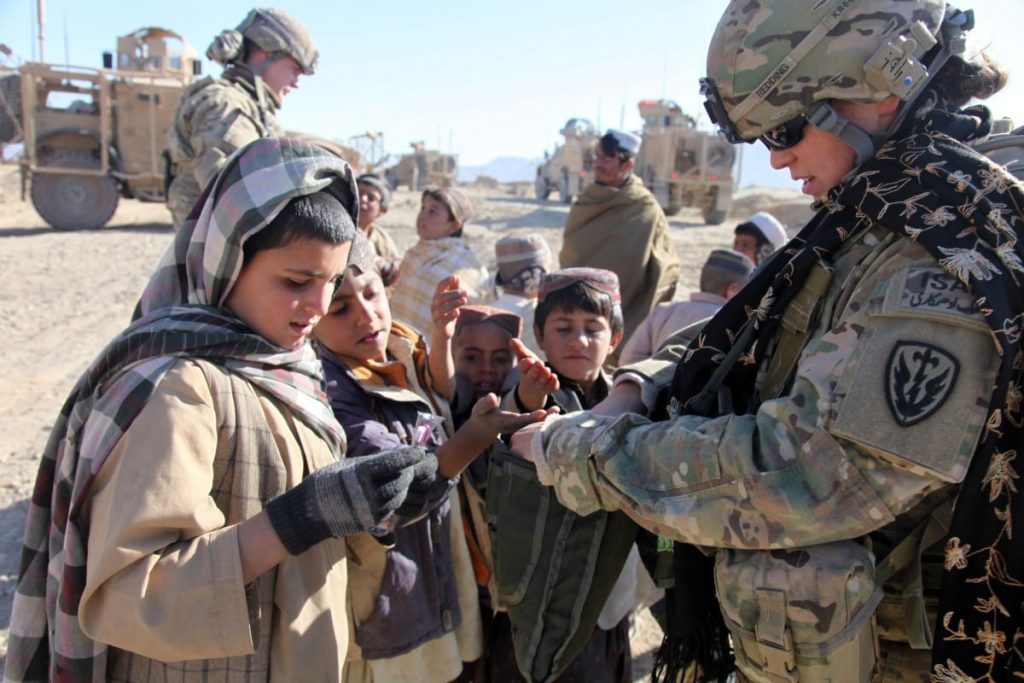
6.2. Infiltration
An essential element of clandestine activity is the ability to infiltrate enemy territory prior to more formal military action.
Infiltration relies much less on stealth engagement, and much more on the subtlety and efficiency of craftsmanship. It is common for an agent's appearance and demeanor to be key to their success as an undercover. ( Source ) Agents should not look out of place or easily recognizable. Agents must also go unnoticed, be able to blend in with the crowd and not attract attention. They must maintain an attitude of trust and calm, so that all HUMINT sources approached feel safe and confident.
A very detailed knowledge of an infiltration location is also essential. It goes beyond knowing things like general location, language, and culture. Understanding all of the following is necessary for successful infiltration: ( Source )
- Understanding of local customs.
- Clothing worn by locals, even in specific areas.
- Laws, including local and national.
- Traditions (religious, political, societal).
- Differences in human behavior.
- Non-verbal communication.
The ISA considers the ethnicity of officers when they are deployed. ( Source ) Sending agents who not only act, but look like the people of the country they seek to infiltrate is an even more effective cover.
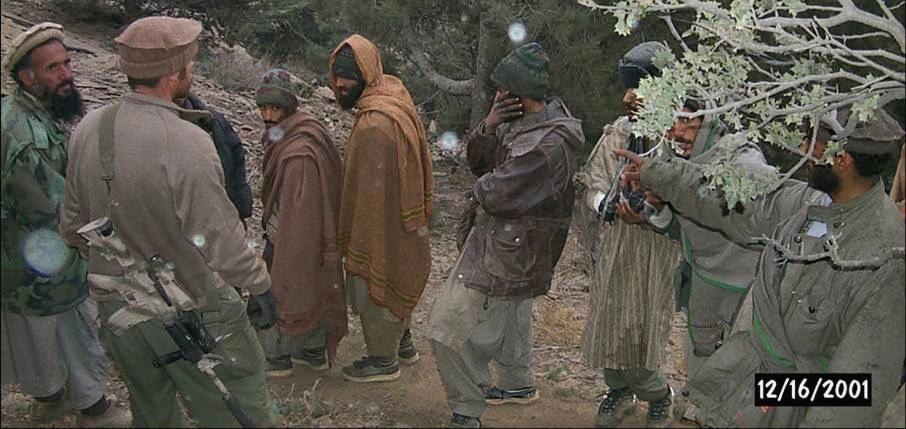
6.3. Intelligence Support
When conducting more integrated operations with other parts of the military, the intelligence support skill comes into play. Every modern military relies on intelligence, and the US military is a voracious consumer of intelligence, both analytically and functionally.
The support provided can take different forms. This is primarily preparedness intelligence and tactical/strategic intelligence for active operations. ( Source )
Active operational support is also a crucial role of the ISA. This was most visible in their operations in Afghanistan, Operation Winter Harvest and Operation Queens Hunter. During these operations, the ISA operated alongside other combat groups, providing them with signals intelligence and terrain intelligence support, including HUMINT. People know the ISA primarily for its involvement in Operation Anaconda. During Anaconda, ISA intelligence helped save both the 10th Mountain Division and the 101st Airborne Division at Takur Ghar. ( Source )
Additionally, the ISA acted as a pseudo-security element for the CIA. In 2003, the CIA and ISA conducted a joint operation in Somalia. The CIA was carrying out extraordinary rendition operations in Somalia in conjunction with the ISA and the help of local warlords. The CIA would speak directly to the warlords while the ISA would provide them with SIGINT support and ground security. ( Source )
6.4. Arts and crafts
ISA agents are master craftsmen. As mentioned earlier, its members train with the CIA, America's most comprehensive civilian intelligence agency. The know-how of the officers to avoid detection is impeccable. Its members often use disguises to avoid detection and if compromised they can quickly disappear from sight and completely change their appearance. Agents can secretly enter enemy buildings to install cameras.
“Talk about close target recognition… That's pretty crazy.… Two people with a lock pick kit and a camera. If they had been caught, they were finished. - SMU Operator (on ISA breaking into an Al-Qaeda safehouse)
Additionally, HUMINT agents working under deep cover will sometimes work in male-female teams. Establish cover as husband and wife to live and conduct intelligence gathering missions in a target country. This is particularly useful in countries where the socialization of men and women is frowned upon outside the family. ( Source )
7. ISA equipment
For a Tier 1 group dedicated primarily to intelligence gathering and support, ISA equipment cannot be fully verified, nor can the continued use of any weapon or equipment be verified. verified. It is after all not a strictly combat-focused role like its other Tier 1 Operators.
6.1. Weapons
Given the nature of their operations and the close work and training they receive alongside other U.S. special operations forces, much of their equipment is likely to mimic that of special mission units that they support and work with them.
Like many special ops groups, their active arsenal is likely not a small, rigid loadout, it's a range of diverse weaponry available to suit the needs of the unit. Most ISA trainees come from the Army Special Forces, which means many have skills in CQC, sniper, counter-sniper, and general tactical engagements. ( Source ) This indicates that members of the first four battalions who are combat specialists will have a wide range of skills, and therefore a wide range of weapons they use.
However, due to the nature of the ISA's mission, its operators are rarely likely to carry weapons into the field. ISA agents often work in disguise and undercover. If an agent is in a country with official cover, owning a gun could mean being sent to jail or dead. When agents are in less restrictive environments, they can often be seen carrying weapons used by the locals, most often in the form of AKs. Additionally, concealment also meant being a factor in weapon selection. Based on photos of ISA agents and reasonable assumptions, they are more likely to be carrying:
-
Rifles
- M4A1
- M4A1 Block II
- HK-416
- HK-416c
- AKM
- AK-74
-
submachine guns
- MP5k
- MP7
-
Pistols
- Glock 17
- Glock 19
- Glock 26
- Sig M17
6.2 . Special equipment
For a unit like the ISA, firearms are not its primary weapons. Tools like radios, computers, and hooks are far more crucial to the success of his missions. The ISA is known to use signal skimmers to pick up enemy radio transmissions and zero in on their location. The unit conducts close surveillance with cameras, even going so far as to secretly enter terrorist hideouts and install hidden cameras.
At some point in the Global War on Terror, the ISA, with an Air Force and Delta component, began building a fleet of ISR aircraft. Known as the "Confederate Air Force", a joke referring to their title, "The Army of Northern Virginia". The fleet consisted of 15 different aircraft types for a combined total of 40 aircraft, all equipped with SIGINT intercept technology. ( Source )
7. Notable ISA operations
Some of the ISA's best-documented operations shed light on the general nature of the ISA's global operations. These deployments include Operation Winter Harvest, Operation Queens Hunter, and their role in Operation Anaconda.
7.1. Operation winter harvest
In the 1980s, extremist parties on both sides of the political spectrum plagued Italy. One such organization, the Red Brigades, made up of communist-leaning far-left extremists, kidnapped US Brigadier General James Dozier. Dozier was taken hostage and mistreated, the Red Brigades considering him an ideological enemy to be made an example of. ( Source )
Two JSOC task forces participated in the search and rescue operations, Delta Force and an ISA detachment. ISA's SIGINT group gathered signals intelligence via aircraft, which was then passed on to NSA analysts. This intelligence then triangulated the possible location of Dozier. ( Source ) Once the hideout was located, using a mix of SIGINT, GEOINT and HUMINT, a raid was initiated.
Italian forces carried out the raid themselves; rescue Dozier and return him to the United States without a single victim. Not only did this demonstrate that the ISA was functionally effective, it showed that it could operate alongside not only various elements of the US military, but also foreign military elements.
7.2. Operation Queens Hunter
Intelligence Support Activity operations in El Salvador, under Operation Queens Hunter, demonstrated the effectiveness of the newly created squadron's command of SIGINT and interdepartmental cooperation.
Working alongside SEASPRAY, a specialized aviation unit that would later become part of Delta Force, the ISA would conduct aerial SIGINT operations to aid the Salvadoran military against guerrillas. ( Source ) At the time, the Salvadoran military faced attacks from left-wing groups and more deadly right-wing death squads. Oversight of the guerrilla factions enabled the Salvadoran military to successfully defend against their attacks. SIGINT operations expanded into areas where guerrilla operations overlapped, such as Nicaragua, which faced increased enemy Contras.
The execution of SIGINT surveillance by the ISA was so successful that the one-month operation was extended to three years. Being very proficient in collecting HUMINT and SIGINT made it a very effective, yet specifically dedicated, intelligence task force.
7.3. Afghanistan: the fox and the anaconda
Every component of the US military was involved in the invasion of Afghanistan, including the ISA. Under the direction of JSOC, the ISA operated alongside other elements of JSOC and the CIA, codenamed Gray Fox. ( Source ) Gray Fox's operators and intelligence specialists operated alongside other special operations units, including Delta Force and DEVGRU, as well as other components of the United States military.
The vast majority of ISA operations in Afghanistan are still classified. However, Operation Anaconda is one of the few publicly known ISA operations in Afghanistan. Operation Anaconda highlights the vital role the ISA plays in the battlespace.

Operation Anaconda was, by most standards, a very difficult engagement. The terrain was extremely rugged, the enemy was much more entrenched than expected, and Murphy's Law was in full effect. . During the run-up to the engagement, as well as potentially during the infamous Battle of Takur Ghar (aka the Battle of Robert's Ridge), ISA operators conducted aggressive SIGINT operations, intercepting enemy communications and passing them on to allied forces. ( Source ) This allowed the forces involved in the surrounding Shahikot valley to be better informed of enemy movements and positions. Indeed, the ISA's exploitation of signals intelligence has saved the lives of hundreds of American soldiers from the 10th Mountain and 101st Airborne Divisions.
7.4. Iraq: Red Dawn
The invasion of Iraq was an extremely complex time for the US military with units scattered across the country carrying out a wide variety of missions. Some forces focused on eliminating Iraqi forces and others on removing the ruling Hussein family. Under the umbrella of Joint Special Operations Task Force 20, the Intelligence Support Activity helped track down and locate Saddam Hussein. ( Source )
Prior to Saddam's capture, more than 40 of his family members were captured and interrogated to determine his whereabouts with little success. However, the ISA intercepted Iraqi communications that corroborated intelligence gathered from his family members. Subsequently, Task Force 121, a combination of special mission units and conventional forces, staged a raid on a small agricultural complex in the Iraqi countryside. Initially, the raid appeared to be a failure until a Delta operator threw debris at exfil. The debris revealed a spider hole and as an operator readied a grenade, Saddam poked his head out of the hole.
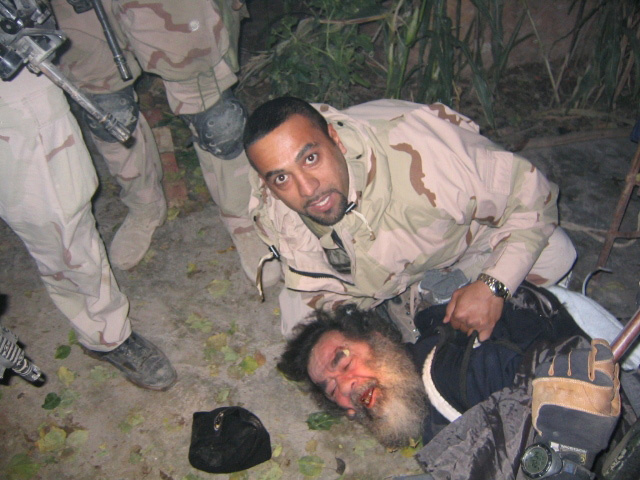
It is uncertain whether ISA operators were on the scene at the time of his capture, but the operational intelligence provided was critical to the success of the operation.
7.5. Center tip
The ISA trials at Queens Hunter were not the only time the team was tested in South America. Guerrilla insurgents in Nicaragua were only a part of the multitude of threats facing the United States. With cartels all over South America creating havoc for pro-American forces, Pablo Escobar and his cartel were the target of several US government agencies and departments, including the ISA. ( Source )
Under the operational codename "Centra Spike", the Intelligence Support Activity operated alongside CIA and local law enforcement elements to track down Escobar. Thanks to their mastery of SIGINT, the ISA quickly got down to intercepting radio and telephone transmissions. They were so adept that observers commented that they could "...literally extract information from the air", speaking not only of the revolutionary use of SIGINT but also of the skill of the ISA. ( Source )
Centra Spike agents operated throughout Colombia, as well as in neighboring countries where the cartel's influence extended. In keeping with their mastery of infiltration, they had an array of forged passports, credit cards and documents to enable easy movement between territories. Eventually, agents had identified the locations of a number of cartel hideouts and high-value targets, including Pablo. The eventual shooting that ended Pablo's life may not have directly involved the ISA, however, his efforts certainly helped locate and kill the cartel boss.
8. Summary
As with any clandestine unit, only so much can be known about one of JSOC's special mission units. No unit is as secret as the intelligence support activity. The vast majority of their operations are shadowed not just in shadow, but in total darkness. The ISA differs from its sibling task forces in that it is not primarily a combat-focused team, excelling in HUMINT and SIGINT operations which allow it to provide extremely valuable intelligence to other elements. military.

Although its history is relatively brief and the known missions it has undertaken even briefer, it has become one of the most interesting and influential special operations groups available to JSOC and the US military. .
0 comments